Take Care of Your LiPO Drone Batteries, Dronethusiast Battery Care Guide

Lithium Polymer Batteries (LiPo’s) have now been with us for many years and have become an essential part of this hobby, which means that proper drone battery care has also become essential. I bet that everyone reading this will have used a lithium battery in some way, shape or form. They now power many electrical devices, such as mobile telephones, laptops, and tablets. Most drone enthusiasts recognize the inherent risk in charging these types of batteries especially if you don’t have the top charger, which we’ll talk about a little further down, you’re going to want to charge them inside a protective casing like this. Even if you’re on a budget and purchased one of the best drones under 100, you will still want to protect the battery to the best of your ability. A battery case will help you do this.
Ultimate Drone Battery Care PDF
The Ultimate LiPo Drone Battery Care Guide – Download this article as PDF now[/thrive_lead_lock]
Quick Review: Click here to Jump to Top 3 List
There are different kinds of Lithium based batteries, and this is the battery you’ll want if you need one for a phantom drone. but the most common for Drone use is the Lithium Polymer cell, due to the lightweight construction and the performance associated with this type of battery.
From something as small as a single cell 100mAh battery you’ll find in Nano Proto X quadcopter, all the way up to 6 cell 22000mAh packs we’re now seeing in larger Drones! If you fly a DJI Phantom, a single battery constitutes more than 10% of your unit cost at $129 (versus the most expensive Vision+ that runs at $1159 today). So whether you are getting the most out of those batteries or not makes a lot of difference. Battery failure could cause malfunctions and even a crash, so a bad battery can actually cost you a lot more than just its replacement value.
Over the years we’ve seen continuous improvements in battery technology and I’m sure further improvements are on the horizon!
Quick tip – Travel & Charging Bags for Lipo Batts
If you’re just starting out with LiPO Drone batteries we suggest you make sure to charge them inside a 9 x 12 inch protective LiPO charging bag, or 175 x 60 x 75mm size, also there is the 9 x 7 x 2inch size, whatever best fits your batteries.
| Type | Image | Size | Best Price |
|---|---|---|---|
| LIPO Safe Bag - Large | 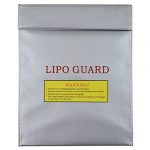 | 9 x 12 Inches | See Best Price |
| LIPO Safe Bag Rectangle |  | 175 x 75 x 60 mm | See Best Price |
| LIPO Safe Bag Pouch |  | 9 x 7 x 2 in | See Best Price |
Stop worrying about what to get for your kids this holiday season. Dronethusiast provides guides for drone shopping for every type of drone, like a small quadcopter or house drone. Get some help by reading up on our Cyber Monday drone deals article, also check out our updated Black Friday Drones 2019 article.
NiCad’s and NiMH’s
For decades we’ve been using nickel-cadmium (NiCd) batteries, later followed by nickel-metal hydride (NiMH). These have always served us well and still do. With these batteries, maintenance has always been key to maximising performance and durability. Neither like to be left for long periods of time without being cycled or topped up and both suffer from high internal self-discharge.
NiCd batteries will typically lose approximately 1% of their charge per day; worse still NiMH batteries can lose as much 5-20% of their charge on the first day and 1-4% per day after that. Newer LSD (Low-Self-Discharge) NiMH battery technology such as Eneloop from Sanyo and others reduces this problem, but they still suffer.
Lithium Polymer batteries don’t self-discharge anywhere near as much.
Typically, you can leave a fully charged LiPo on the shelf for a month and it might only lose 1% of its capacity. It means, in theory, you can leave a fully charged pack on the shelf for a month or two and just pick it up and go flying.
So, everything you know about NiCd & NiMH batteries must now be put to one side. LiPo cells demand a different level of respect and different rules apply. I’m sure some of you know the potential dangers of Lithium cells if used incorrectly, yet if used correctly, you shouldn’t have a problem and they’ll serve you well.
In this guide, I will talk about how to treat your batteries and make sure you get the most out of your investment. It can be the difference between getting less than 50, or more than 200 cycles!
So, imagine you’ve just purchased a new setup. Along with your new equipment, you’ve also purchased a number of shiny new battery packs and discovered they cost a considerable amount of money, especially modern DJI batteries!
New Drone Battery Care
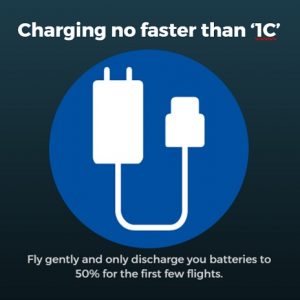
If you’ve ever purchased a new battery and checked the voltage, you’ll discover that each cell will be at approximately 3.8/3.85V per cell. This equates to approximately 40% of capacity and over the years, manufacturers have to come to the conclusion that this is the best condition for cell storage over long periods. All new batteries arrive in this condition.
I’m sure most of you will have bought a new mobile phone only to discover that the battery is partially charged. You now understand why! When charging new batteries, it is advisable not to fast charge for at least the first few cycles.
This means charging no faster than ‘1C’ (I’ll explain charging rates in more detail later). The same applies to the first few discharge cycles. Some say that this isn’t essential. However, it certainly won’t do any harm. It’s thought that a ‘Breaking In’ procedure is a good idea.
The idea is to fly gently and only discharge you batteries to 50% for the first few flights. This is thought to help settle the internal makeup within the battery and help set the pack up for a prolonged life. After the first few cycles, it’s not unusual to see a slight increase in performance and usually a sign that the pack is ready for normal use.
Charging Lithium Polymer Batteries
It is extremely important you only use a charger specifically designed for charging Lithium Polymer cells. All new chargers now come with a balancing feature which is essential for both safety and battery life reasons.
The stated operating voltage of a typical Lithium Polymer cell is from 3V to 4.2V when fully charged. Discharging cells below 3 volts will invariably cause irreversible damage and charging above 4.2V is dangerous and easier to achieve than you might think! If you have a selected the ‘LiPo’ function, your charger will be set to peak detect cells reaching 4.2V at which point the charger will cut off. Set the wrong type of battery; begin charging beyond 4.2V, the pack will swell and if left, will eventually catch fire! Yes, it’s that dangerous, so please be vigilant when setting your charger!
Charging Stations
Some modern battery packs such as the one that powers the DJI Phantom 2 quadcopters come in a form factor that slips safely into the camera drone itself so you don’t have to connect them manually. For these kinds of batteries, there are charging stations available because it is possible to create a compartment or housing that let’s you simply slip batteries into.
You might think that the only benefit of such a charging station is that you can charge batteries in parallel. Well, there is a lot more to it. I have seen people use parallel charging boards and spot on, they only cost like ten bucks. Wicked.
But what they will not necessary tell you is that many of these charging boards (at least the cheap ones) will charge 3 batteries 3 times longer, so you don’t save any time using them for your drones. Ok, maybe having to plug the next battery in takes some time, but no considerable gain I am sure you agree.
If you are looking for a “home” for your batteries where they can rest peacefully and safely while charging, you need solution like this one.
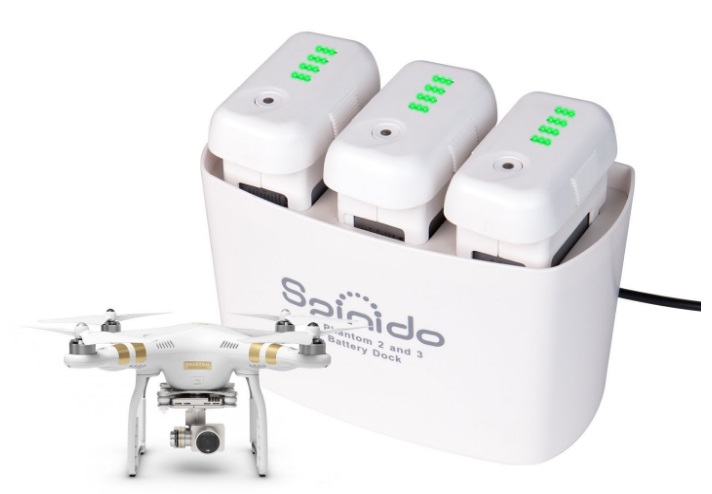
The Spinido Battery Dock Intelligent Charging Hub, designed for safe and fast charge or Phantom 2 and 3 batteries. It’s also suitable with the Inspire 1-100w charger and Inspire 1-180w Rapid Charger. This allows you to intelligently charge up to 3 batteries at the same time, while each battery’s charge is shown with an LED indicator. It’s future proofed by an integrated port for firmware updates when needed and the power is managed to each battery to ensure safe charging. Furthermore it’s made with high quality materials, that are going to last and protect your investment.
C Rating
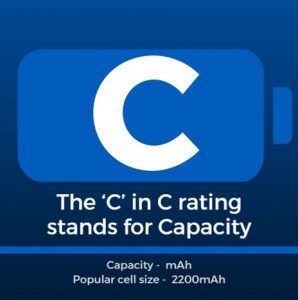
Almost all Lithium Polymer batteries you buy today will come with a ‘C’ rating. The ‘C’ in C rating stands for Capacity. The C rating is the maximum, safe, continuous discharge rate of a pack as specified by the manufacturer, so when you see 20C printed on your label, it means it can be discharged at 20 times the pack’s capacity, ‘continuously’.
Capacity is usually measured in mAh and a popular cell size is 2200mAh. Therefore, so by way of example:
2200mAh 20C Cell = 2.2A x 20 = 44A continuous discharge
Along with the continuous discharge rate, some batteries display ‘burst’ discharge rate. This is typically twice the continuous discharge rate. It usually means the battery is capable of allowing twice the current, but only for a few seconds at a time.
Damage Avoidance
You will damage your batteries if you use them beyond these specifications. The idea is to stay well away from these limits. In theory, the higher the C rating, the better the battery. In high current draw applications such as 3D RC helicopters, high C rated batteries are essential. The trouble with 3D helicopters is that the cells are subjected to high current draws in hard maneuvers. The current draw spikes are sometimes beyond the limits of the battery. If the battery is pushed beyond its limits, the battery will get hot, the performance will drop and if pushed hard enough, possibly inflate and cause irreversible damage.
How Good is your Lithium Polymer Battery?
Please, please, please beware of ‘claimed’ C ratings! Most batteries now come from China and at present there seems to be no control on what manufacturers can print on their labels and no requirements to substantiate their claims. I’ve seen countless batteries clearly over specified which cannot deliver anywhere near their claimed current draw! On the flip side, I’ve also used and sold 20C packs which clearly outperform other manufacturers claiming 45C! It can be confusing to determine the genuine specifications as vaunted.
Please do your research, ask around and spend wisely – cheap and good as well as expensive and poor can still be found in the market today! I’ve tested hundreds of packs and to this day, I’ve never seen a pack perform beyond 35C. If you see anyone claim beyond 35C, you should be skeptical!
Balancing Lithium Polymer Batteries
Balancing is very important. If a pack is used and kept within its safe working limits, cells tend not to drift too far out of balance. Imbalanced cells can occur when the pack has been discharged too much. Sometimes a pack may just develop a bad cell. Balance charging will help detect an imbalance between cells and reduce the likelihood of overcharging other cells within the pack. For this reason, please ONLY balance charge your batteries.
Temperature
When charging your batteries, temperature is important. Never charge a battery that has been stored below 0ºC as you risk an explosion at these temperatures. Cold storage for LiPo cells is actually a good thing, but before charging them again always make sure your packs have had the chance to fully reach room temperature before commencing!
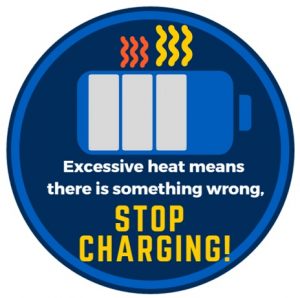
When charging, check the temperature of the battery by hand. If charging at a 1C charge rate, the battery shouldn’t get warm. However, I frequently charge 3C and packs do get slightly warm. Excessive heat means there is something wrong, STOP CHARGING!
After a flight, you may find your batteries are warm to touch. It may be a good idea to give the packs a chance to cool a little before recharging.
Damaged Cells
Never try charging a pack that has been crash damaged, you run the risk of fire! Cells that are obviously swollen or have physical damage should never be used and careful disposal is required, especially if the cells are swollen.
If you have a pack sitting on the shelf, fully charged, never try topping it up!
NEVER LEAVE A CHARGER UNATTENDED!
The most important point above all, knowing how potentially dangerous a LiPo battery can be if something goes wrong, NEVER leave your batteries on charge unattended! No matter how safe you THINK your charger is, things can and really do go wrong from time to time.
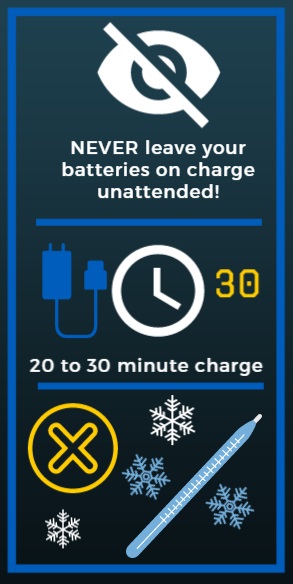
You are at the mercy of technology and some of the worlds most experienced users have had serious accidents with LiPo batteries, including the RC helicopter legend, Curtis Youngblood who seriously burnt his hand through a faulty charging process. So please be careful! Also never charge LiPo batteries inside your house if you can really help it. There are countless videos and images spread all over the internet from LiPo fires, please have a look and beware some of the images are shocking!
Charging Rates
The general consensus has always been to charge your LiPos at a rate of 1C, e.g, a 2200mAh battery would be charged at no more than 2.2A. Charging above 1C was once considered bad for battery health. There are still some diehards out there who are adamant that this is still the case. Over the last two years, I’ve been surrounded by packs being charged at 3C and seen absolutely no difference in lifespan! I’ve even carried out tests with packs charged at 1C and 3C, the resulting lifespan was the same.
I prefer 20 to 30 minute charge times myself and feel that almost all modern LiPo packs are more than capable of being charged at 3C without causing any damage. Some manufacturers now quote 5C or even 8C, but through my own tests, packs do sometimes tend to come off the charger a little too warm for my liking and essentially, it’s excessive heat which causes a battery to eventually fail.
Discharge Rates & Level of Discharge
Earlier I explained what a C rating is. We already know that discharging at a rate beyond the specified C rating will damage a battery. Equally damaging is deep discharging a battery. Most damage to lithium polymer batteries is caused by the user running batteries flat and regardless of the quality of the cells, if you run your battery flat, you will cause irreparable damage and wear your battery out very quickly!
Leaving an acceptable level of charge in the battery is by far the most significant factor in prolonging battery life and the most common reason for early battery failure is to ignore this advice! Discharging lithium polymer batteries beyond 80% of their capacity can significantly reduce the lifespan of any LiPo battery. Tests have proven that batteries that are only discharged to 50% can be cycled at least 3 times the lifespan of batteries that are regularly flattened.
A battery that is flattened every time it’s used, may only last 40-50 cycles, so aim for no more than 80% or certainly a resting voltage of 3.6V or more per cell and you’ll get a lot more from your cells. Sticking to this rule I’ve seen more than 150 cycles from many of my own packs. Yet still, the mythology that abounds leads so many fliers to concentrate on charging rates which have never been the issue, rather than excessive discharge levels. I’ve seen people religiously charge at less than 1C and then go fly a battery completely flat, which is a double blunder! So please make sure you time your flights to leave more than 20% left in your packs and enjoy more cycles!
Working Temperatures
Lithium polymer batteries operate best when they are warm. They are capable of operating right up to 60ºC, and conversely, don’t work very well in cold temperatures. A warm battery is a happy battery but go beyond 60ºC and damage starts, with evidence in the form of puffing or inflation like a balloon if taken to extremes. Cold weather is definite problem.
If you ever indulge in winter flying, note how your batteries just don’t perform the way they do in summer weather! On a freezing cold day, the voltage drop off can be enough for ESCs (Electronic Speed Controller) to hit voltage cut off under load.
Lithium polymer batteries like a bit heat in them before they start performing. When researching, I came across varying ideas regarding optimum working temperatures, but it is safe to suggest that somewhere between 30-40C is optimum. So if you’re out flying on a cold winter’s day, make sure your packs are warm before you start flying.
Storage
I’m going to draw from my personal real world experiences here. Manufacturers state that when storing lithium polymer batteries for any length of time, we should store them ideally at a temperature of between 5ºC & 27ºC. The lower the temperature the better.
The optimum voltage for long-term storage, as already mentioned is 3.8-3.85V per cell. Best practice after a days flying, is to charge them back to storage voltage using the storage function on your charger. However, if you do happen to return home with a fully charged pack and intend to go flying the following week, I personally leave my packs charged ready for the following weekend.
My argument here is returning a fully charged pack back to storage is effectively using one of your precious cycles and is likely to do more harm than just keeping it fully charged for your flying session the following week! Heat is more of an issue here. If you do have a fully charged pack, keep it at room temperature or below. Over the years, real world testing has shown that packs which are left fully charged for long periods of time and are subjected to heat, deteriorate and loose capacity.
So always aim to use all of your charged packs when out flying and charge them back to storage afterwards. Always store them in a cool, dry place. Purchasing of LiPo safe bag or ammo box to store packs in is certainly good idea, too.
A good example for a small and inexpensive LiPo bag:

‘Puffing’ – Why does this occur?
There are many reasons why this takes place, with a combination of events and actions invoking cell swelling. From poor manufacturing standards using poor materials to incorrect usage, or just wear and tear with age, but the overall result is the same, the battery is tired and past its best if swelling has started to show!
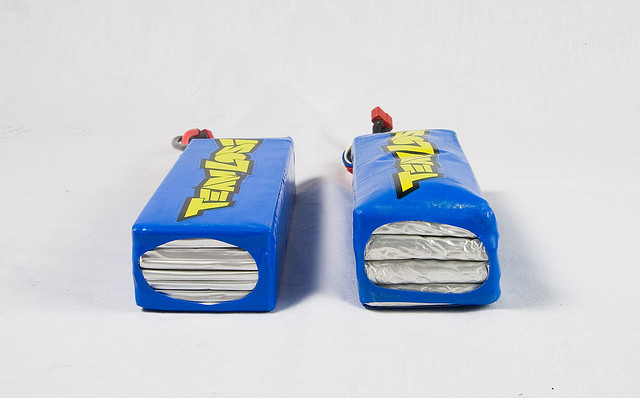
Puffed LiPo Battery Source: Jeff Jasky, Flickr
A few years back there were noted problems with some of the cheaper cells from China. It was discovered that the primary reason for premature cell failure was water contamination in the manufacturing plants. Many factories are in humid climates and high humidity causes water to be trapped inside the cells, which causes Lithium oxidation.
The oxygen can then be freed by electrolysis and with nowhere for the oxygen to escape, the battery then begins to puff. Poor separator construction used in cheap cells is also a factor with bad separator formulation being a contributing factor. Manufacturing processes have come a long way since and poor materials and poor manufacturing are much less of an issue today!
Puffing can also occur if cells are overcharged or charged too quickly. When this happens, you end up with excess free lithium on the anode (metallic lithium plating), and free oxygen on the cathode. A free oxygen atom is small enough to freely move over the separator without carrying an electric charge, resulting in lithium oxide or lithium rust. You then have the problem where lithium oxide uses fewer oxygen atoms than existed in its ionized state and the result is more free oxygen. To emphasise this point, if you were to overcharge a LiPo battery underwater, it would still catch fire as it produces its own oxygen supply!
Discharging
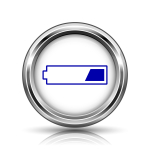
Over discharge lithium polymer batteries or discharge them too quickly, and the reverse to the above takes place. You end up with lithium oxide on the cathode, albeit at a lower rate because there’s simply less there. Basically, an abused battery quickly develops corrosion on both poles of the battery, inside the case.
The more you abuse the battery, the worse the corrosion gets. With corrosion taking place, the resistance goes up and the battery then has to work even harder which causes more damage, so it’s a vicious circle! Regardless of quality, over-discharging lithium polymer batteries is the most common cause of puffing, so hopefully this emphasises the problem and reminds you just how damaging it is to flatten your batteries!
Heat
As already stated, heat is a big factor. If a battery is pushed beyond 60ºC during discharge or charging, problems occur due to metallic lithium generation, which damages the cell and again, causes puffing.
Voltage
The maximum voltage for a cell is 4.235V per cell, but this only possible when cell temperature is at around 60ºC. The maximum voltage at room temperature is around 4.2V per cell. Below 10ºC that figure can drop to just 4.0V. Going beyond these figures, the over-abundance of electrons will again break chemical bonds and free lithium to bond with oxygen creating lithium oxide and again, more puffing!
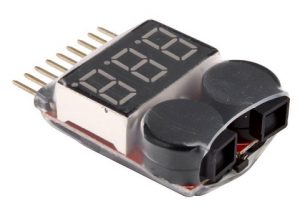
Once a battery has cooled down, the puffiness can reduce and most will generally keep using the battery, so if that’s you then keep on eye on it. Ideally, you should stop using a battery once it remains in a puffed state as you run the risk of fire, should the cell rupture, so be warned!
Need a set of tools to work on a drone, working with all of those tiny screws can be a pain in the butt, check out the LB1 high performance tool kit.
When to Retire Lithium Polymer Batteries?
There are so many variables that determine the lifespan of your batteries and if a pack is abused, it will only last a handful of charges, yet if treated properly, you’ll see 200+ cycles from your packs. This of course depends on your application. As a general rule, when your battery no longer holds more than 80% of its original capacity, it’s time to retire your pack and certainly if there is excessive puffing.
Disposal
Unlike NiCd or NiMH batteries, Lithium Polymer batteries are environmentally friendly. For safety reasons, it’s best that lithium polymer batteries be fully discharged before their disposal and this should of course take place outdoors in the open for obvious reasons. A slow discharge to completely flat with a bulb or series of bulbs is now what I do. Once all cells are showing zero voltage, it is pretty safe to assume the pack is now inert.
Unlike other batteries, inert LiPos can be simply thrown in your normal trash. If a battery is physically damaged then, discharging fully could be dangerous and greater care is required when disposing! Search the Internet and you’ll soon find various recommended solutions for disposal. YouTube is a great source of how NOT to do it and if you’ve not seen a fire, then please have a look, it’ll certainly make you think!
That’s about it for this installment. Hopefully this feature will help you appreciate and get the very best from your batteries. Drone battery care is an ever-evolving subject. I’m always open to feedback and would love to hear from other people and their real world experiences. For me it’s all about spreading the word with accuracy and integrity. Without our batteries we couldn’t do what we do!
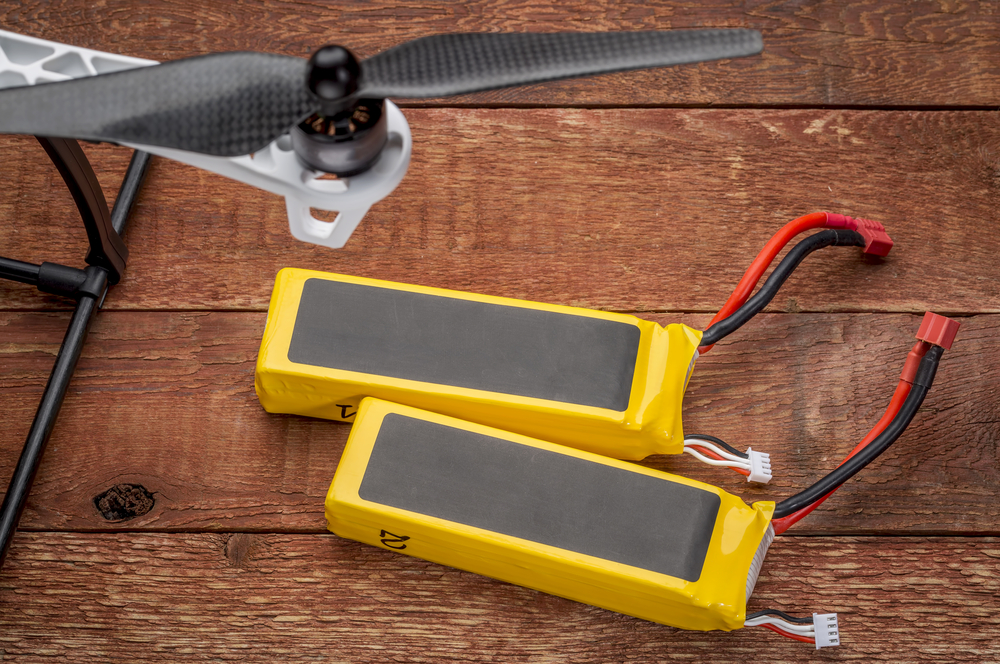

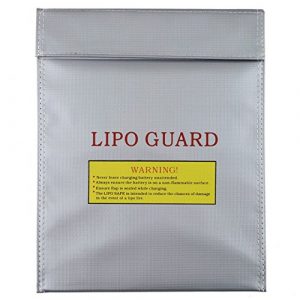

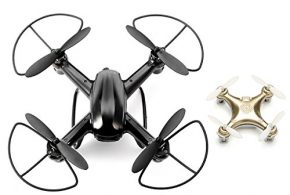


an excellent article that was sorely needed. It’s all a little intimidating, but this was a big help. I suggest that you teach us how to tell what the cell voltage is (I have a Phantom Vision+ 2).
On the battery right above the MAH it should tell you. Mine is a 3.7.
May we know what is TRICKLE CHARGING on Phantom V3 LiPo batteries? Thank you.
Hello Scarecrow. To my best knowledge, you should never apply a “trickle” charge to a Li-Po battery. Trickle charging at even the lowest possible rates will cause the cells within the battery to charge beyond 4.2V, resulting in cell damage and potential fire. Hope this helps.
cell chemistry and manufactures terminal voltage end point.
I guess the people who designed these batteries should know how to charge them. It always talks about voltage not current. I do not know why anyone would want to charge at 100 milli amps, but as large as the charger stops at the right voltage then everything should be fine.
Hello, who is the author of this article, could I get your e-mail address to follow-up with a few questions? I have reviewed a number of batteries, read dozens of articles and its really hard to understand a ‘better’ from a ‘worse’ battery as there are so many variables. Any thoughts as to which is an appropriate battery brand/model for general multicopter use? Thank you.
Hello. Any particular questions can come in a comment (we read each and every one), via the comment section or info@ address of our domain. Let us know if we can help.
hello !
my question is about the smaller batteries (250 or 380 or 500 mah) that come with the micro drones. they don’t come with a wall unit but a usb charger, so what happens if i connect it to my phone charger that puts out 5v at 1amp or even 2amp. second question is that can these batteries be charged from portable power cubes( meant for mobiles or tabs usually) ? mine puts out 5v at 2 amp.
TIA
The very reason I looked up this thread was to get an answer to the same question you asked.
It amazed me that the guy who said ask anything right here on the thread instead of sending him a PM didn’t respond with a direct simple answer to you, me or anyone else who has the same question and who are complete newbies to rc batery charging.
As for me, I’m reading that charging a 3.7 volt battery with a voltage higher than 4.2 volts will harm the battery.
I’m also reading that for the mAh batteries you mentioned charging at 1 amp won’t be bad for the 500 mAh battery, will not be ideal for the 250mAh battery and would caluse no harm to the 380 mAh battery.
One thing I was hoping to learn is whether a set of 4, 5 or 6 batteries that come with a bulk charger are wired internally with a circuit that at least regulates the volts down to 4.2. I guess I’ll have to find a volt meter and test the charger leads.
250mah=.25A=1C, 380mah=.38A=1C, 500mah=.5A=1C, 1000mah=1A=1C, 1300mah=1.3A=1C, 1500mah=1.5A=1C, 2200mah=2.2A=1C… If you wanted to charge at exactly 1C you would need to use equil amp to capacity. That only really applies to larger batteries where you get to set up your charger. On the micro drones that come with their own usb charger that usb charger will have a BEC that will regulate the power down 4.2V to the battery. I’ve been using 1A and 2A phone chargers with not problems. Just make sure they don’t get hot and always watch them as they are charging.
James14 my New 22.2 Volt 3200mah E Flite LIPO Battery SWELLED on third 5 minute Flight ,makes me ANGER!!!!!!
Hey guys, great article and especially important for guys who are not used to dealing with and caring for RC LiPos. I found the lack of a decent way to discharge quickly to storage level quite a problem so I created a little gadget to do just that. I call it the Phantom Angel (because it protects your Phantom 🙂 ) and have many a bunch of them to share almost at cost to whoever’s interested. More info at http://phantomangel.rocks
Hey, send us a review unit so we can test it.
Hi, I want to fly on a commercial airliner with my P3 batteries. Any advice on the safest state to have the batteries in to take them on as hand luggage?
Thanks,
Hello Ian. Here is a complete article on the issue which should contain answers to any question you might have. https://www.dronethusiast.com/traveling-with-lipo-batteries-drone/
GREAT ARTICLE, CONGRATULATION
Battery alarm? set to what? I set my 3S (1300mAh) to 10 Volts because with in 30 seconds of landing my voltage has raised back up to 10.7 volts, is that good or bad?
Hello one question is not covered in whole topic ….can you tell if you purchased in North America .can it be use around the world .can you change in Europe and Asia? At 220v?
I put to charged my lipo battery wrong, on life mode and now doesn’t work,, what can I do for fix it??
Hello. Sorry but not sure what life mode is. What type of multirotor are you flying? Might be able to check on it. If you attempted to charge it with the polarities mixed up than chances are you might have bricked it. If it’s a so called “smart battery”, it could have prevented that from happening but I assume it’s not because those are impossible to charge with the polarities mixed up.
i have just purchased a DFI Phantom 3 Standard drone. Included was a charger for the battery, but not for
the remote control unit. There is a USB cable, but not the small converter from AC to Dc. The literature
says that it will take about 2 hours to charge the remote unit at 1.5 amps. I have a 1.0 amp. converter
and a 1.2 amp. converter. No one has been able to tell me whether i can use either of these to charge
the remote instead of a 1.5 amp. converter. Will I damage the unit by using a converter with less than
the 1.5 amps?
Hello Jim. You are good to charge at 1.0 amp, it will just be slower. Just make sure you don’t charge at a higher rate than 1.5 amps.
Hello Zslot!
First, I want to thank you for taking the time to help us! You answered some questions when I first purchased my Phantom 3 Pro. My question now is: perhaps I missed it, but can we go by the percentage of charge to know where to leave the battery stored?
Best regards,
Steve
What is the cathode/anode/electrolyte for these cells? Why are the recommended temperatures so high compared to, for example, the traditional NCR 18650B cell? Again, what is the chemistry in these cells? Can these cells get 200 cycles at continuous 20C rates? That’s a 3 minute discharge. A cylindrical Li ion cell would melt at those rates. Ty for the article. Well written and informative. Ty in advance for answering my questions.
Hi,
I need massive help. I’m trying to get my DJI Inspire drone in it’s case which includes 3 spare batteries couriored from Thailand to South Africa through DHL but as they are lithium based batteries i need documentation to support that they are not hazardous. But from everything i’ve read online they are hazerdous. Most Airlines state you have to travel with them as online baggage but when i flew Emirates to Thailand there was no issue when i checked it in as baggage.
Any idea what to do?
There is no documentation that they are not dangerous because they are. At the moment, you should carry them on for sure. Check this post: https://www.dronethusiast.com/traveling-with-lipo-batteries-drone/ Make sure you read the update as well!
It would seem to me that using an ammo can is not possible as there is no way the charging cord can lead into the can without having to drill a hole through the steel that’s big enough to thread the width of not only the cord but the plug
I recently had a dji standard 3 “accident”. It fell in my swimming pool for about 10 seconds before I retrieved it. After disassembling, drying, and rebuilding the drone back to life, I tested it with a friend’s lipo battery and things worked fine! Yay my drone still works!
BUT my predicament lies with my existing, “barely damaged” lipo battery. I have not yet charged it nor tested the battery. I’ve only inspected my battery visually and it looks fine to me. I am really not sure what to do. Any help please??
Pack the battery in some rice(Yes rice) and let it set there for about a week.
If accessible clean the terminal with a paper towel and check for any corrosion. If present wipe it off.
Using a metal box or Lipo bag charge the battery while inside the box or bag.( Metal box will require a small hole of slot for the charger cord.) After a full charge note the condition of the battery: Did it fully charge? If not then discard. Is the battery swollen? If so discard. If the battery seemed to take a full or close to full charge and it is not swollen try it out in your drone.
After using it in your drone again check for damage. mark the battery as WET and keep an eye on it in the future. If moisture has gotten into the battery it will probably fail at some time. Moisture is BAD.
Let me know. Be safe/Have fun
I have a SkyViper stunt drone with a 500 mAH 3.7v battery and was having a problem charging it Ive read it should only take about a hour and a half to fully charge and I’ve waited almost 3 hours and I connected it to my drone and nothing happened I can’t move it or anything the little light on it wont come on either
Great article. Very helpful and let us know the basic ideas about charging and discharging and various other factors responsible for LIPO batteries.
Thanks man
Hi, i recently purchased a quadcopter with 3.7V/350mah lipo battery.
My question is whether using a 3.7V/1100mah battery will extend the flight time.
Where can I find the charger with 3 plugs to charge 3 battery’s? Promark vr
Hi Zsolt. I just bought a 2.4 GHz sky master quadrocopter from propel. Do you know where I can buy more batteries cause they really last not long. Thank you
My first thought is to try hobbyking.com.
Which battery works with the sky master quadro
copter from propel? I also bought one for my granddaughter and need additional rechargeable batteries. There is no number on the battery but the ac adapter says 240V.
Hello, just asking my battery is at 72% capacity, should i replaced and never use it again?
Hi,
I want to charge the battery of my drone by inductive charging. The problem is that I am not sure which specifications the charger should have taking into account that my battery has this specifications:
C rate: 8C.
Volts: three 3.7 volt cells connected in series (3S), resulting in 11.1 volts.
Battery capacity: 5100 mAh.
Could somebody help me?
Thank you so much
Each of my 3 drones came with their own charger.
I fly my drones until I get a low battery warning.
I then attach the batteries to their supplied charger and try to be attentive to when their fully charged notification lights come on or go off.
Am I doing it wrong?
What procedure(s) should I change.
I do have some batteries that are slightly swollen.
You seem to have more sophisticated chargers than I.
My Drone is a Direct X 380
My quadcopters are A Syma X8W
and a Dromida Kodo HD
Very good article. Accurate, clear, concise, full of detail. Thank you. Simon Stone
I just purchased 5 – Syma X5SW-v3 Done’s for my sons, grandson and husband for Christmas and am looking for a battery recommendation. The Drone is shipped with a 3.7V 650mAh Lipo Battery that is only suppose to provide 4 to 5 minutes flight time while using the camera or 7 minutes without. Rather than purchasing multiple batteries for each I’d like to find a long lasting battery that will not damage the units. Being a total novice/beginner on this topic I’d greatly appreciate any information or recommendation that you can provide.
That was a very informative article. Thank you for clearing up a lot of misconceptions and answering a lot of questions about these batteries.
Hello
My drone is a SYMA X5SW I got it for Christmas. Today I was flying my drone with my friends but two of the batteries did not work when I charged all of them the night before for the recommended charging time which was 2hrs 10mins
Any ideas of what had gone wrong?
Also my batteries are lipo 500mah
After flying I remove my battery and put it in the refrigerator for appx. 1hr. .
I have found this to be quite helpful in keeping my battery at its peak.
My question is has anyone else tried this ?
Thanks
Joe
So is this charging info still relevant? My phone battery is a 3.85 lipo (OnePlus 6). When it fast charges, it hits up to 4.385. I know it’s not safe to push 3.6/3.7 past 4.2, but does that still apply to new batteries? Also, does it decrease life cycles going past 4.2 the same way it did a few years ago. Everyone talks about the battery university study, but were they using 3.85 batteries?
My daughter won a drone for a prize, used it once and lost all interest. We’d like to give it away or sell it or something. Naturally we can find everything but the charging cord. It has a 7.5 volt lipo battery. The cord was a short thing with the little box end to plug the battery into and then the normal end for plugging into the electrical source. I can’t find a replacement cord anywhere. Any ideas? I hate to toss it just because we can’t recharge the battery.
I recently purchased a Drone X Pro RC Drone Quadcopter with a 3.7V 500mAh Lipo Battery. I came with a usb charging cable. The problem is that there isn’t a micro port on the battery to charge it. I ordered a six pack of the same batteries and they too do not have a charging port. Can anybody help me on this. There has not been a reply from the Chinese distributor that shipped the drone
David